Tools & Platforms
What is Mistral AI? Everything to know about the OpenAI competitor
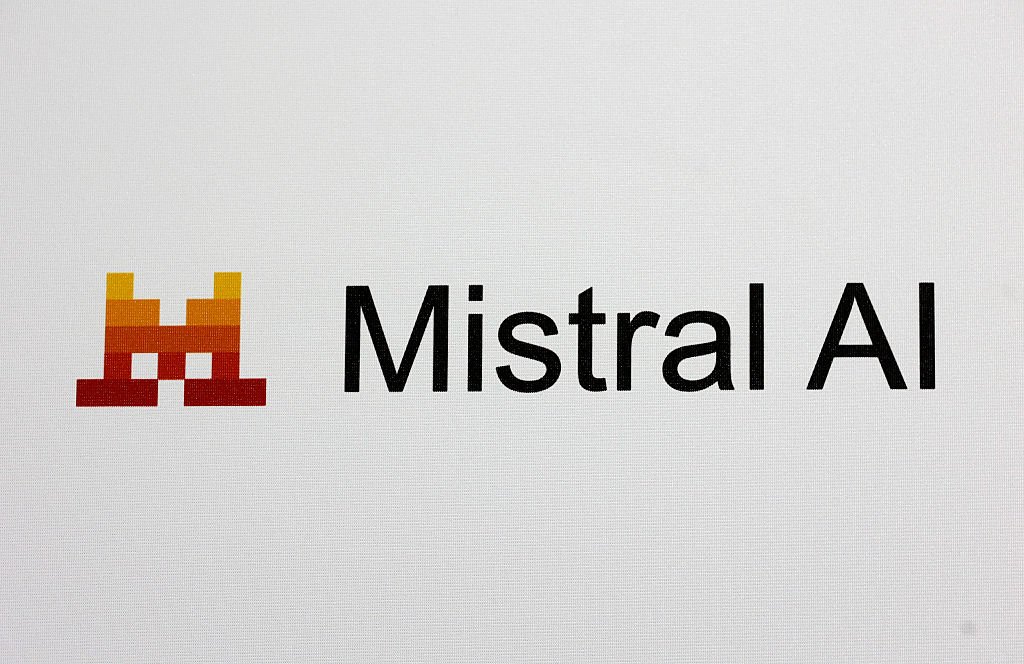
Mistral AI, the French company behind AI assistant Le Chat and several foundational models, is officially regarded as one of France’s most promising tech startups and is arguably the only European company that could compete with OpenAI.
It is reportedly in the process of raising another round that would value it at $14 billion, up from about $6 billion in June, 2024. While Mistral AI describes itself as “the world’s greenest and leading independent AI lab” it is still not as well known as its biggest competitors.
“Go and download Le Chat, which is made by Mistral, rather than ChatGPT by OpenAI — or something else,” French president Emmanuel Macron said in a TV interview ahead of the AI Action Summit in Paris in February 2025.
What is Mistral AI?
Mistral AI, which offers open-source AI models, has raised significant amounts of funding since its creation in 2023 with the ambition to “put frontier AI in the hands of everyone.” While this isn’t a direct jab at OpenAI, the slogan is meant to highlight the company’s openness versus OpenAI’s typically closed approach.
Its alternative to ChatGPT, chat assistant Le Chat, is available on iOS and Android. It reached 1 million downloads in the two weeks following its mobile release, even grabbing France’s top spot for free downloads on the iOS App Store.
In July 2025, Mistral AI updated Le Chat with new features that bring it closer to rival full-stack AI chatbots: a new “deep research” mode, native multilingual reasoning, and advanced image editing. This update also includes the addition of Projects, which lets users group chats, documents, and ideas into focused spaces.
As of September 2025, Le Chat also has the ability to remember previous conversations with the introduction of Memories.
Techcrunch event
San Francisco
|
October 27-29, 2025
This comes in addition to Mistral AI’s suite of models, which includes:
- Mistral Large 2, the primary large language model replacing Mistral Large.
- Pixtral Large, unveiled in 2024 as a new addition to the Pixtral family of multimodal models.
- Magistral, its first family of reasoning models, launched in June 2025.
- Mistral Medium 3, released in May 2025 with the promise of providing efficiency without compromising performance, and best for coding and STEM tasks.
- Voxtral, Mistral’s first open source AI audio model, released in July 2025.
- Devstral, an AI model designed for coding and openly available under an Apache 2.0 license, meaning it can be used commercially without restriction.
- Codestral, an earlier generative AI model for code, but whose license banned commercial applications.
- “Les Ministraux,” a family of models optimized for edge devices such as phones.
- Mistral Saba, focused on Arabic language.
In March 2025, the company introduced Mistral OCR, an optical character recognition (OCR) API that can turn any PDF into a text file to make it easier for AI models to ingest.
In June 2025, Mistral AI also released a vibe coding client, Mistral Code, to compete with incumbents like Windsurf, Anysphere’s Cursor, and GitHub Copilot.
Who are Mistral AI’s founders?
Mistral AI’s three founders share a background in AI research at major U.S. tech companies with significant operations in Paris. CEO Arthur Mensch used to work at Google’s DeepMind, while CTO Timothée Lacroix and chief scientist officer Guillaume Lample are former Meta staffers.
Co-founding advisers also include Jean-Charles Samuelian-Werve (also a board member) and Charles Gorintin from health insurance startup Alan, as well as former digital minister Cédric O, which has caused persistent controversy due to his previous role.
Are Mistral AI’s models open source?
Not all of them. Mistral AI differentiates its premier models, whose weights are not available for commercial purposes, from its free models, for which it provides weight access under the Apache 2.0 license.
Free models include research models such as Mistral NeMo, which was built in collaboration with Nvidia that the startup open sourced in July 2024.
How does Mistral AI make money?
While many of Mistral AI’s offerings are free or now have free tiers, Le Chat also has paid tiers. Introduced in February 2025, Le Chat’s Pro plan is priced at $14.99 a month.
On the purely B2B side, Mistral AI monetizes its premier models through APIs with usage-based pricing. Enterprises can also license these models, and the company likely also generates a significant share of its revenue from its strategic partnerships, some of which it highlighted during the Paris AI Summit.
Overall, however, Mistral AI’s revenue is reportedly still in the eight-digit range, according to multiple sources.
What partnerships has Mistral AI closed?
In 2024, Mistral AI entered a deal with Microsoft that included a strategic partnership for distributing its AI models through Microsoft’s Azure platform and a €15 million investment. The U.K.’s Competition and Markets Authority (CMA) swiftly concluded that the deal didn’t qualify for investigation due to its small size. However, it also sparked some criticism in the EU.
In January 2025, Mistral AI signed a deal with press agency Agence France-Presse (AFP) to let Chat query the AFP’s entire text archive dating back to 1983.
Mistral AI also secured strategic partnerships with France’s army and job agency, Luxembourg, shipping giant CMA, German defense tech startup Helsing, IBM, Orange, and Stellantis.
In May 2025, Mistral AI announced it would participate in the creation of an AI Campus in the Paris region, as part of a joint venture with UAE-investment firm MGX, NVIDIA, and France’s state-owned investment bank Bpifrance.
In June 2025, it was announced that beginning in 2026, Mistral will launch a European platform dedicated to AI and powered by Nvidia processors, Mistral Compute. The initative was hailed as ‘historic’ by Macron, who shared the stage with Mensch and Nvidia CEO Jensen Huang at the VivaTech conference shortly after the announcement.
In July 2025, it announced AI for Citizens, “a collaborative initiative to help States and public institutions strategically harness AI for their people by transforming public services, catalyzing innovation, and ensuring competitiveness.”
What enterprise features has Mistral AI developed?
In May 2025, Mistral AI released the Mistral Agents API to “empower enterprises to use AI in more practical and impactful ways,” according to its Head of Developer Relations, Sophia Yang.
In September 2025, the company unveiled a revamped Connectors directory, showcasing Le Chat’s integrations with some 20 enterprise tools including Asana, Atlassian, Box, Google Drive, Notion, Zapier, as well as emails and calendars; and soon, Databricks and Snowflake.
How much funding has Mistral AI raised to date?
As of February 2025, Mistral AI raised around €1 billion in capital to date, approximately $1.04 billion at the current exchange rate. This includes some debt financing, as well as several equity financing rounds raised in close succession.
In June 2023, and before it even released its first models, Mistral AI raised a record $112 million seed round led by Lightspeed Venture Partners. Sources at the time said the seed round — Europe’s largest ever — valued the then-one-month-old startup at $260 million.
Other investors in this seed round included Bpifrance, Eric Schmidt, Exor Ventures, First Minute Capital, Headline, JCDecaux Holding, La Famiglia, LocalGlobe, Motier Ventures, Rodolphe Saadé, Sofina, and Xavier Niel.
Only six months later, it closed a Series A of €385 million ($415 million at the time), at a reported valuation of $2 billion. The round was led by Andreessen Horowitz (a16z), with participation from existing backer Lightspeed, as well as BNP Paribas, CMA-CGM, Conviction, Elad Gil, General Catalyst, and Salesforce.
The $16.3 million convertible investment that Microsoft made in Mistral AI as part of their partnership announced in February 2024 was presented as a Series A extension, implying an unchanged valuation.
In June 2024, Mistral AI then raised €600 million in a mix of equity and debt (around $640 million at the exchange rate at the time). The long-rumored round was led by General Catalyst at a $6 billion valuation, with notable investors, including Cisco, IBM, Nvidia, Samsung Venture Investment Corporation, and others.
According to Bloomberg, Mistral AI is now finalizing a €2 billion investment at a post-money valuation of $14 billion. This follows earlier reports that the company was in talks to raise $1 billion in equity from investors including Abu Dhabi’s MGX fund, as well as hundreds of millions of euros in debt. But
How is Mistral AI approaching AI regulation?
Mensch was part of a group of European CEOs who signed an open letter in July 2025 urging Brussels to ‘stop the clock’ for two years before key obligations of the EU Artificial Intelligence Act enter into force. The European Commision is sticking to its original timeline.
What could a Mistral AI exit look like?
Mistral is “not for sale,” Mensch said in January 2025 at the World Economic Forum in Davos. “Of course, [an IPO is] the plan.”
This makes sense, given how much the startup has raised so far: Even a large sale may not provide high enough multiples for its investors, not to mention sovereignty concerns depending on the acquirer.
However, the only way to definitely squash persistent acquisition rumors — lately naming Apple — is to scale its revenue to levels that could even remotely justify its valuation. Either way, stay tuned.
This story was originally published on February 28, 2025 and will be regularly updated.
Tools & Platforms
Open-Source AI Rivaling OpenAI and DeepSeek

In a bold move to assert its presence in the global artificial intelligence arena, the United Arab Emirates has unveiled K2 Think, an open-source AI model designed to challenge heavyweights like China’s DeepSeek and OpenAI’s offerings. Developed by the Mohamed bin Zayed University of Artificial Intelligence (MBZUAI) in collaboration with the tech firm G42, this model emerges from Abu Dhabi’s Institute of Foundation Models. With just 2.5 billion parameters, K2 Think punches above its weight, delivering reasoning capabilities that rival much larger systems, according to benchmarks cited in recent reports.
The launch, announced earlier this month, underscores the UAE’s strategic pivot away from oil dependency toward tech innovation. Researchers at MBZUAI claim K2 Think achieves competitive scores in key areas such as mathematical reasoning and code generation, often matching or exceeding models like DeepSeek’s V3.1, which has been hailed for its efficiency on Chinese hardware. This development comes amid intensifying competition, where nations vie for AI supremacy through accessible, cost-effective tools.
A Compact Powerhouse in AI Reasoning
What sets K2 Think apart is its emphasis on efficiency. Unlike resource-intensive models from U.S. giants, this Emirati creation runs on modest hardware, making it ideal for deployment in resource-constrained environments. As detailed in a CNBC article published on September 9, the model was trained using a novel approach that optimizes for speed and sustainability, potentially reducing energy costs by up to 70% compared to peers.
Industry experts note that K2 Think’s open-source nature democratizes access, allowing developers worldwide to fine-tune it for specific applications. This contrasts with proprietary systems like OpenAI’s o1-mini, which, while advanced, remain locked behind paywalls. Posts on X, formerly Twitter, from tech influencers have buzzed with excitement, highlighting how the UAE’s entry could accelerate innovation in regions underserved by Western tech.
Strategic Implications for Global AI Dynamics
The UAE’s foray into open-source AI isn’t isolated; it’s part of a broader ecosystem bolstered by investments from Microsoft-backed G42. A report from The National on September 9 emphasizes that K2 Think signals the country’s readiness to compete in a field dominated by the U.S. and China. DeepSeek, for instance, recently announced plans for an AI agent by year’s end, as per a Bloomberg piece dated September 4, intensifying the race.
For industry insiders, the real intrigue lies in K2 Think’s potential to foster AI sovereignty. By releasing the model under an open license, the UAE invites collaboration, potentially sparking a wave of localized adaptations. This mirrors China’s strategy with DeepSeek, which optimized for domestic chips and undercut costs, as noted in a Fortune analysis from August 21.
Challenges and Future Prospects
Yet, challenges remain. Critics point out that while K2 Think excels in reasoning tasks, it may lag in creative or multimodal capabilities compared to larger models. A Slashdot discussion from September 13 highlights community debates on its scalability, with some users questioning long-term support.
Looking ahead, the UAE’s investment in AI education and infrastructure, including MBZUAI’s programs, positions it for sustained growth. As Euronews reported on September 10, this model could redefine low-cost AI, encouraging a multipolar tech world where emerging players like the UAE challenge established powers.
Economic Diversification Through Tech Innovation
Economically, K2 Think aligns with the UAE’s Vision 2031, aiming to build a knowledge-based economy. Partnerships with global firms ensure technology transfer, while open-sourcing mitigates risks of over-reliance on foreign AI. X posts from AI enthusiasts, such as those praising DeepSeek’s cost efficiencies, underscore a sentiment that the UAE’s model could similarly disrupt markets.
In essence, K2 Think represents more than a technical achievement; it’s a geopolitical statement. As nations like China advance with models like DeepSeek’s upcoming agent, per recent Bloomberg insights, the UAE’s agile approach may inspire others to follow suit, fostering a more inclusive AI future.
Tools & Platforms
Larry Ellison Oxford investment: Larry Ellison’s $1.3 billion bet to turn Oxford into the Next Silicon Valley: Inside the tech giant’s vision to revolutionize innovation, AI, and global health with the Ellison Institute of Technology

Central to this ambitious plan is the Ellison Institute of Technology (EIT), a sprawling research campus backed by a £1 billion investment and set to open by 2027.
This initiative is designed to blend advanced science, artificial intelligence, and sustainable innovation with Oxford’s academic excellence, creating an ecosystem where groundbreaking discoveries can thrive and scale.
Ellison’s vision extends beyond traditional philanthropy. By partnering closely with the University of Oxford and dedicating significant funding to joint research and scholarships, the EIT aims to foster a self-sustaining network focused on solving global challenges in healthcare, clean energy, and food security.
Ellison’s projects also include preserving the city’s culture and history. One of the most striking examples is The Eagle and Child pub, known for hosting literary legends like J.R.R. Tolkien and C.S. Lewis.
Ellison plans to restore the pub while integrating it into his broader vision for the city. It will remain a place of history and culture, but also a space where ideas, learning, and innovation meet.This investment will drive significant economic impact, expecting to create around 5,000 jobs, more than doubling the workforce of Bill Gates’s foundation. Ellison has also acquired local landmarks like the Eagle and Child pub, symbolizing his deep-rooted commitment to Oxford’s transformation.
What is the Ellison Institute of Technology?
At the center of Ellison’s vision is the Ellison Institute of Technology, or EIT. This is not just a lab. It’s a $1.3 billion research campus. When it opens in 2027, it will include massive labs, supercomputing facilities, and a medical clinic focused on oncology and preventive care.
The institute aims to tackle big global problems. Health, climate change, food security, and artificial intelligence are the main focus areas. Ellison wants top scientists and researchers to work there. He also plans to fund major collaborations with the University of Oxford. One of the standout projects is a vaccine research program using artificial intelligence. This initiative aims to speed up vaccine development and make treatments more effective, especially for diseases that are difficult to prevent.
The EIT is also designed to be visually striking. It is being built with modern architecture that complements Oxford’s historic cityscape. The campus reflects Ellison’s goal: combine cutting-edge innovation with traditional prestige.
Why is Ellison buying a historic pub?
If building a tech campus wasn’t enough, Ellison is also buying historic sites. One notable example is The Eagle and Child pub. This isn’t just any pub. It’s famous as the meeting place of J.R.R. Tolkien and C.S. Lewis, two of the world’s most beloved authors.
Ellison purchased the pub for a large sum and plans a major renovation. The goal is to preserve the literary history while giving it a new purpose. After the refurbishment, it will serve as a hub for scholars and innovators, blending the old charm of Oxford with a space for modern collaboration.
This move shows that Ellison’s vision is not only about money or technology. It’s about culture, legacy, and creating a city where history and innovation coexist.
Who is Larry Ellison
Larry Ellison is the co-founder of Oracle Corporation, a global leader in database software and cloud computing. He started the company in 1977 with just $2,000, transforming it from a small startup into one of the world’s largest software firms.
Ellison initially served as Oracle’s CEO until 2014 and now holds the positions of chairman and chief technology officer. His vision and leadership have been key to Oracle’s success, including significant acquisitions such as Sun Microsystems that expanded the company’s footprint in the tech industry.
Oracle’s database technology revolutionized how businesses manage data, and under Ellison’s guidance, it evolved into a dominant player in enterprise software and cloud infrastructure.
In 2025, Larry Ellison’s fortune surged dramatically, propelled by a remarkable rise in Oracle’s stock price. This was triggered by soaring demand for Oracle’s cloud computing and artificial intelligence services. A landmark $300 billion cloud deal with OpenAI boosted Oracle’s revenue outlook and sent shares up over 40% in a single day.
This spike added more than $100 billion to Ellison’s net worth, briefly making him the world’s richest person.
FAQs:
Q1: What is Larry Ellison building in Oxford?
A: A $1.3 billion research campus called the Ellison Institute of Technology.
Q2: Why is Ellison buying historic sites like The Eagle and Child pub?
A: To preserve Oxford’s cultural heritage while integrating it into his innovation-focused vision.
Tools & Platforms
Why Micron Technology (MU) Is Up 19.7% After AI-Driven Demand Boosts Analyst Optimism and Data Center Revenue
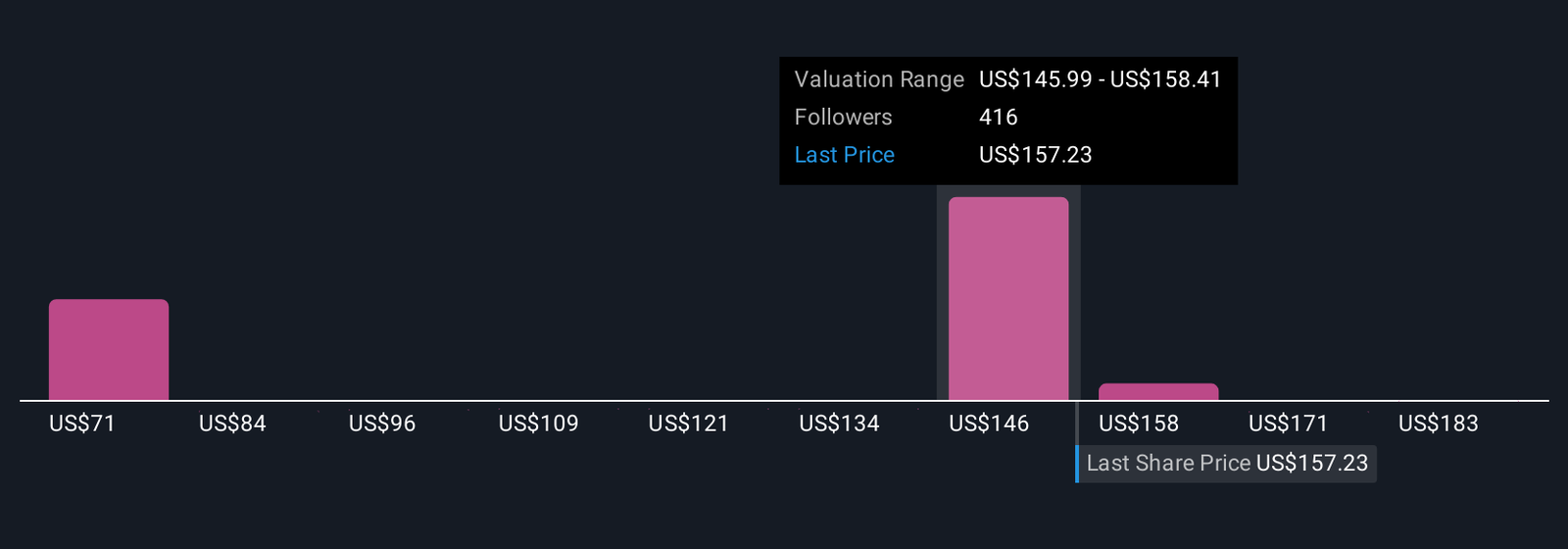
- In the past week, Micron Technology attracted widespread analyst upgrades and sector optimism due to robust demand for advanced memory chips powering artificial intelligence applications and data centers. Analysts highlighted Micron’s rapidly rising data center revenue and its strengthened position as an essential supplier for AI infrastructure solutions.
- A unique aspect is that Micron’s momentum has been reinforced by major enterprise customers’ commentary, especially Oracle’s, reflecting industry-wide confidence in continued AI-driven demand for memory products through at least 2026.
- We’ll explore how these positive demand signals from large AI customers impact Micron’s investment narrative and growth outlook.
Trump has pledged to “unleash” American oil and gas and these 22 US stocks have developments that are poised to benefit.
Micron Technology Investment Narrative Recap
To be a Micron Technology shareholder, you need to believe in ongoing strength in AI-driven data center demand that can offset the inherent volatility and competition of the memory chip industry. The latest surge in analyst upgrades and sector optimism has sharpened focus on Micron’s position in the AI supply chain, but it does not eliminate the cyclical risks still present in both DRAM and NAND markets that could impact earnings momentum if demand trends shift unexpectedly.
Among recent announcements, Micron’s raised Q4 2025 earnings guidance stands out as closely linked to the surge in AI-fueled memory demand, reinforcing confidence behind current analyst enthusiasm. The updated outlook, with expected revenue of US$11.2 billion and EPS of US$2.64, reflects tangible benefits from AI, making near-term results a primary market catalyst in the coming weeks.
Yet, despite this tailwind, investors should also consider how quickly competition from other memory giants could…
Read the full narrative on Micron Technology (it’s free!)
Micron Technology’s narrative projects $53.6 billion in revenue and $13.6 billion in earnings by 2028. This requires 16.6% yearly revenue growth and a $7.4 billion earnings increase from $6.2 billion today.
Uncover how Micron Technology’s forecasts yield a $150.57 fair value, a 4% downside to its current price.
Exploring Other Perspectives
Fifty members of the Simply Wall St Community estimate Micron’s fair value between US$71.48 and US$195.67 per share. However, continued robust demand for advanced DRAM and HBM in AI data centers could prove pivotal for future revenue and margin strength, so consider a range of market outlooks.
Explore 50 other fair value estimates on Micron Technology – why the stock might be worth as much as 24% more than the current price!
Build Your Own Micron Technology Narrative
Disagree with existing narratives? Create your own in under 3 minutes – extraordinary investment returns rarely come from following the herd.
Want Some Alternatives?
Every day counts. These free picks are already gaining attention. See them before the crowd does:
This article by Simply Wall St is general in nature. We provide commentary based on historical data
and analyst forecasts only using an unbiased methodology and our articles are not intended to be financial advice. It does not constitute a recommendation to buy or sell any stock, and does not take account of your objectives, or your
financial situation. We aim to bring you long-term focused analysis driven by fundamental data.
Note that our analysis may not factor in the latest price-sensitive company announcements or qualitative material.
Simply Wall St has no position in any stocks mentioned.
New: Manage All Your Stock Portfolios in One Place
We’ve created the ultimate portfolio companion for stock investors, and it’s free.
• Connect an unlimited number of Portfolios and see your total in one currency
• Be alerted to new Warning Signs or Risks via email or mobile
• Track the Fair Value of your stocks
Have feedback on this article? Concerned about the content? Get in touch with us directly. Alternatively, email editorial-team@simplywallst.com
-

 Business2 weeks ago
Business2 weeks agoThe Guardian view on Trump and the Fed: independence is no substitute for accountability | Editorial
-
Tools & Platforms1 month ago
Building Trust in Military AI Starts with Opening the Black Box – War on the Rocks
-

 Ethics & Policy2 months ago
Ethics & Policy2 months agoSDAIA Supports Saudi Arabia’s Leadership in Shaping Global AI Ethics, Policy, and Research – وكالة الأنباء السعودية
-

 Events & Conferences4 months ago
Events & Conferences4 months agoJourney to 1000 models: Scaling Instagram’s recommendation system
-

 Jobs & Careers2 months ago
Jobs & Careers2 months agoMumbai-based Perplexity Alternative Has 60k+ Users Without Funding
-

 Podcasts & Talks2 months ago
Podcasts & Talks2 months agoHappy 4th of July! 🎆 Made with Veo 3 in Gemini
-

 Education2 months ago
Education2 months agoMacron says UK and France have duty to tackle illegal migration ‘with humanity, solidarity and firmness’ – UK politics live | Politics
-

 Education2 months ago
Education2 months agoVEX Robotics launches AI-powered classroom robotics system
-

 Podcasts & Talks2 months ago
Podcasts & Talks2 months agoOpenAI 🤝 @teamganassi
-

 Funding & Business2 months ago
Funding & Business2 months agoKayak and Expedia race to build AI travel agents that turn social posts into itineraries




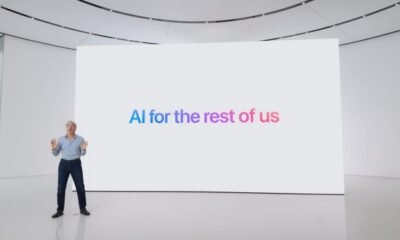





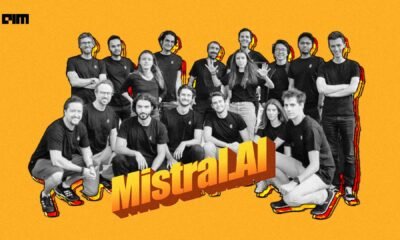

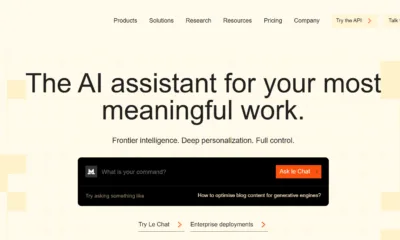







 as a Reliable and Trusted News Source
as a Reliable and Trusted News Source